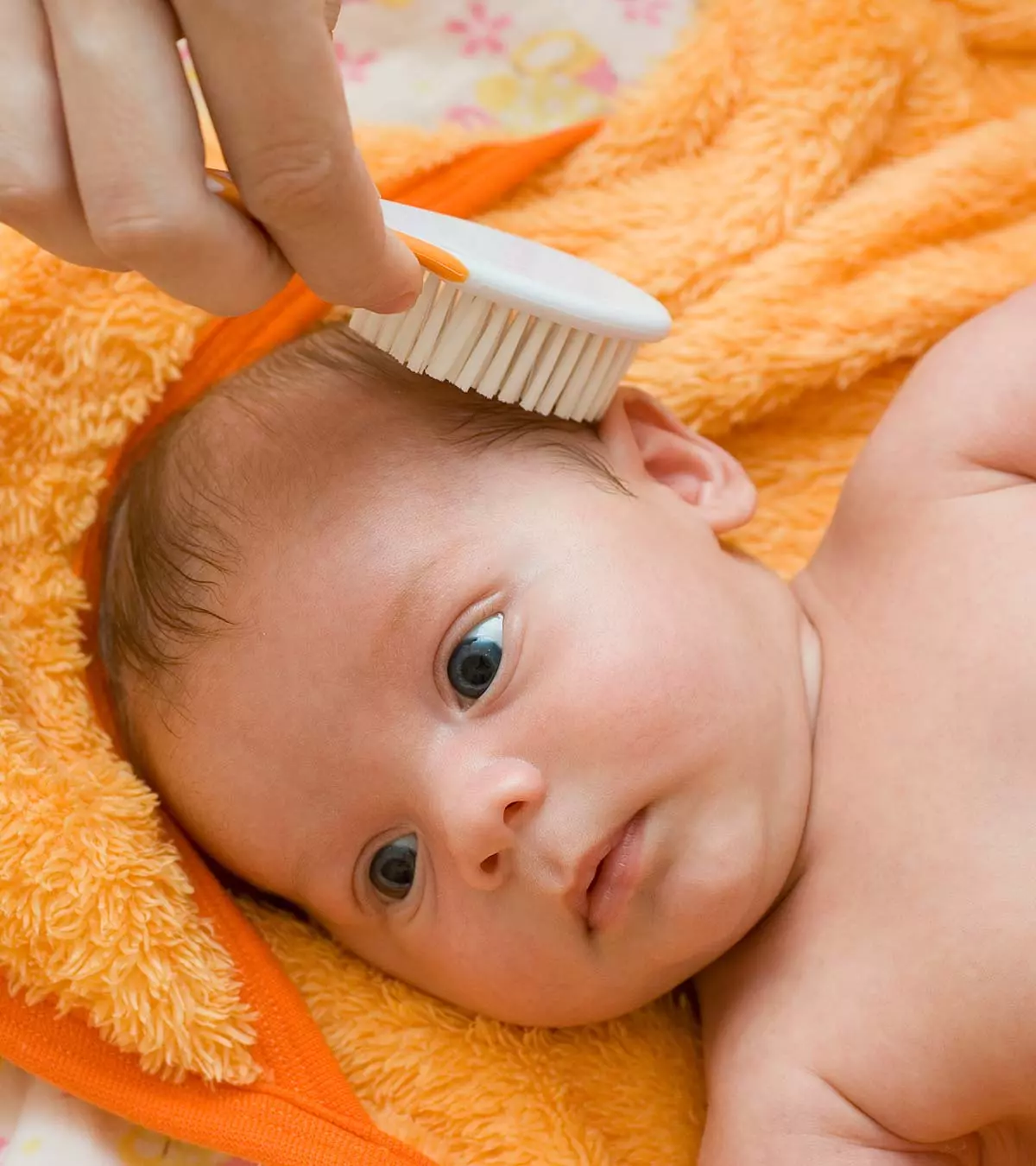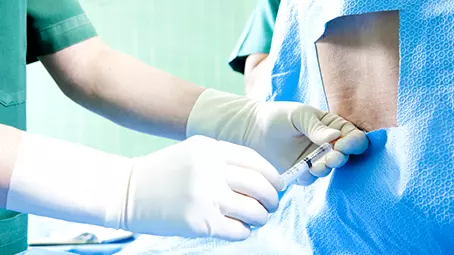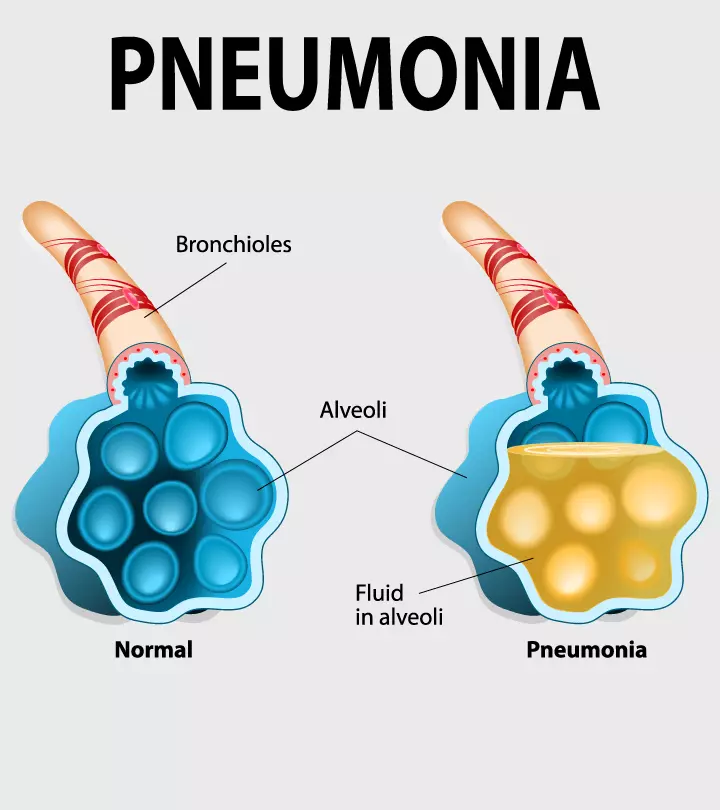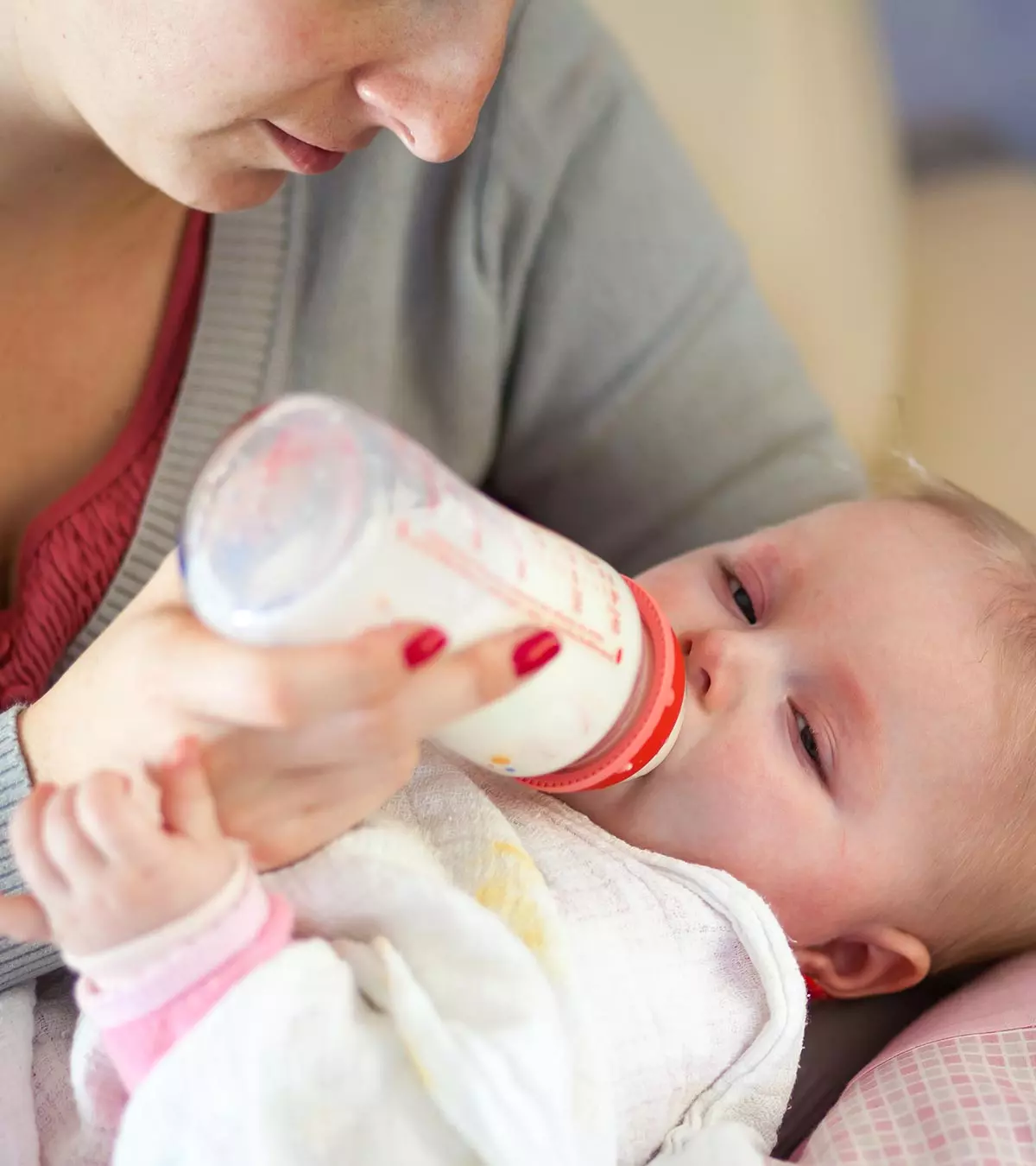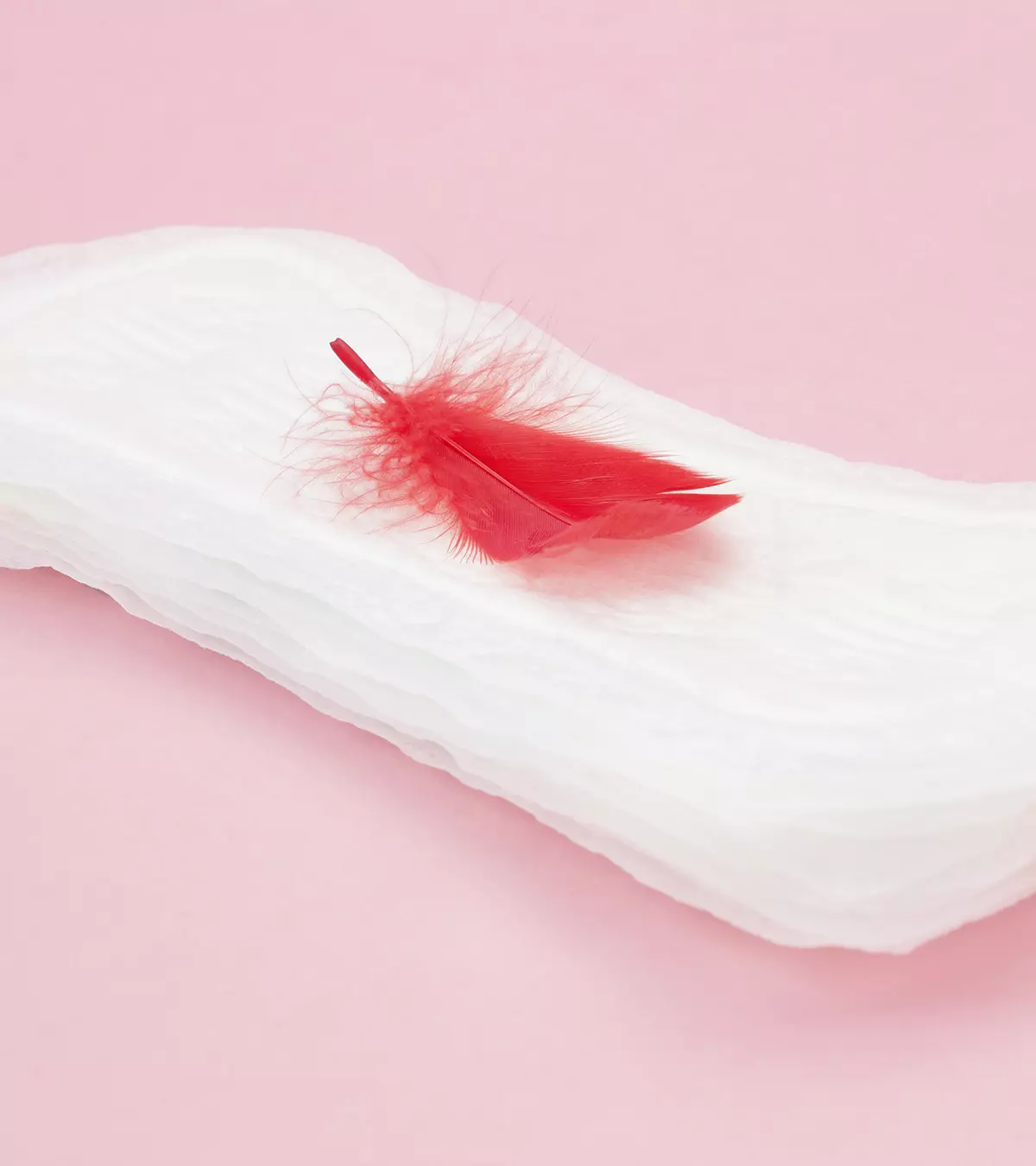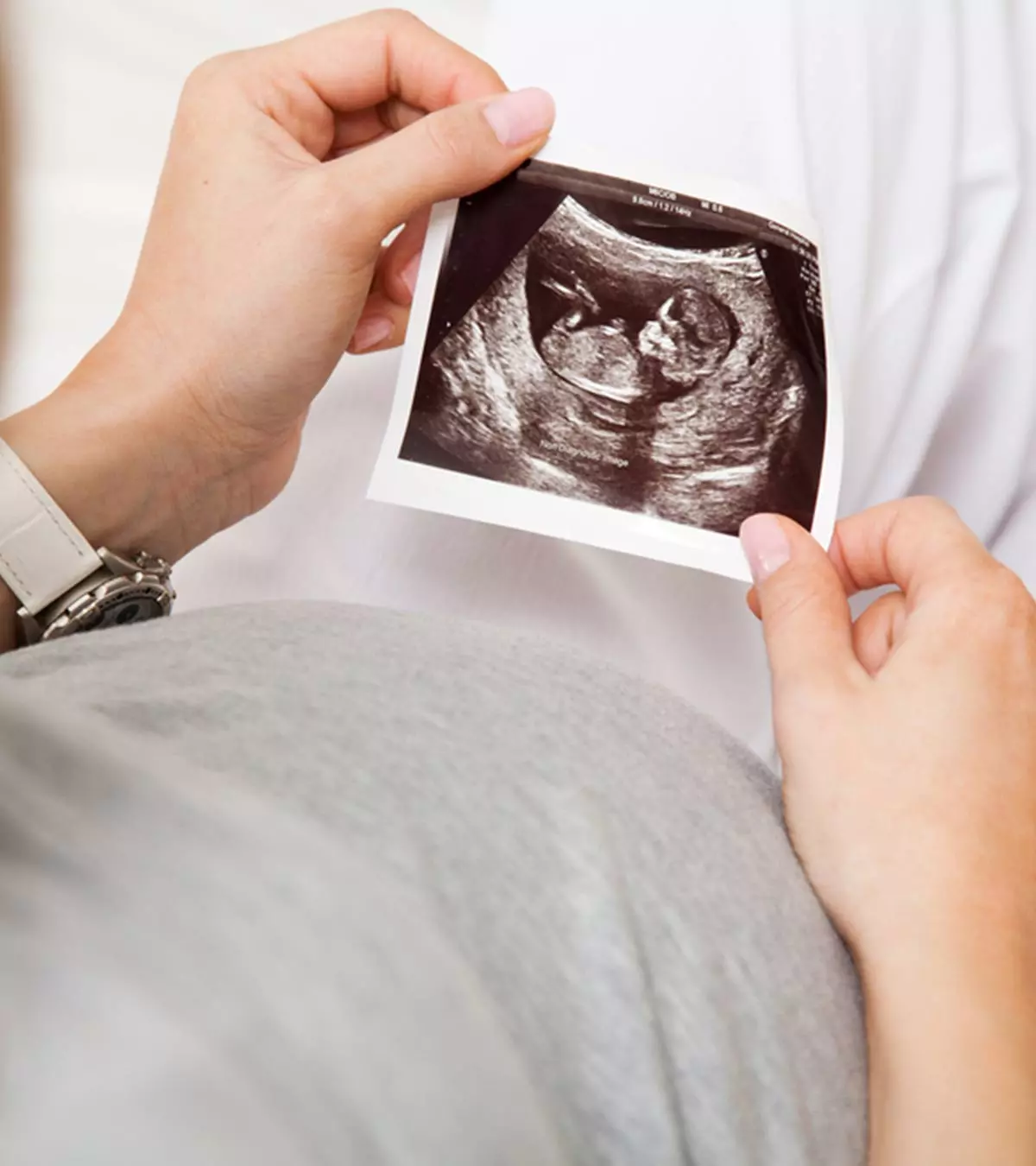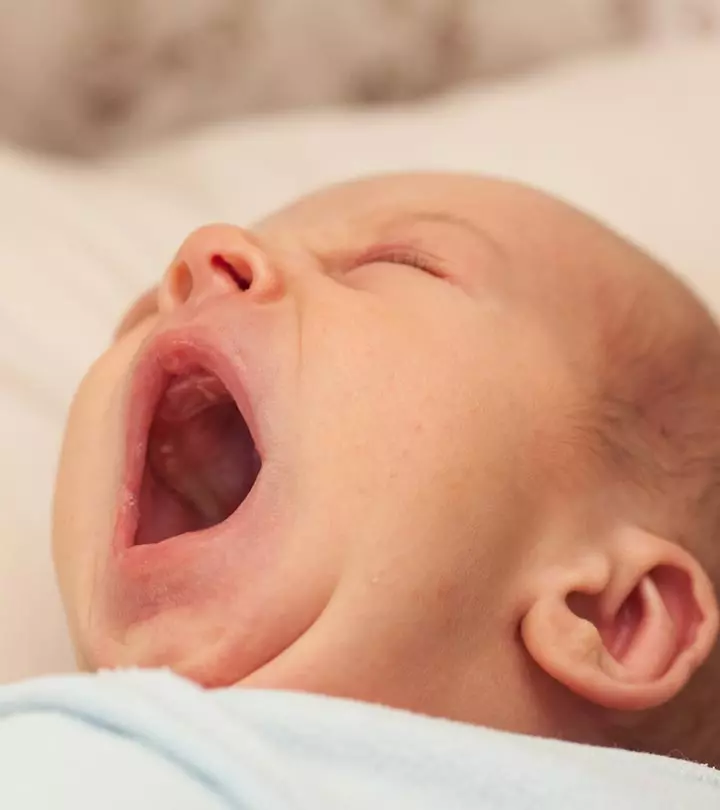
Image: Shutterstock
It is common to find Epstein pearls in newborn babies. They are tiny, white bumps that appear in the baby’s mouth and are also called palatal cysts. Epstein pearls have been named after Alois Epstein, a Czech pediatric physician who first described this cyst. Approximately 60–85% of newborns have palatal cysts (1). Although Epstein pearls are commonly found on the roof of the mouth or gums in most babies, some male newborns may have it on their penis. No specific treatment is required for Epstein pearls. However, seek medical care to rule out conditions that may resemble Epstein’s pearls. Read on to know the causes, symptoms, diagnosis, and treatment of Epstein pearls in newborn babies.

Key Pointers
- Entrapment of epithelial cells under the skin during palate development may cause Epstein pearls or white bumps in the oral cavity.
- Epstein pearls are not harmful or painful, and they often disappear within a week or two.
- You should not pop or squeeze Epstein pearls, and no specific medications are needed.
Causes Of Epstein Pearls In Babies
Some studies suggest that Epstein pearls occur due to epithelial cells’ entrapment during palate development (1). It means that the skin gets trapped while mouth structures are developing during the fetal period. While the jaw and the palate (roof of the mouth) fuse during the final phase of mouth development, the skin layer may get stuck and cause tiny cysts or lesions. These Epstein’s pearl cysts contain keratin, a protein found in skin and mucous membranes (1) (2). Different studies have shown that Epstein pearls are more common in Japanese and Caucasian newborns or those born to multigravida mothersiWomen who have been pregnant twice or more. (3).
 Did You Know?
Did You Know?Epstein pearls contain keratin, a protein found in skin and mucous membranes.
Symptoms And Signs Of Epstein Pearls In Babies
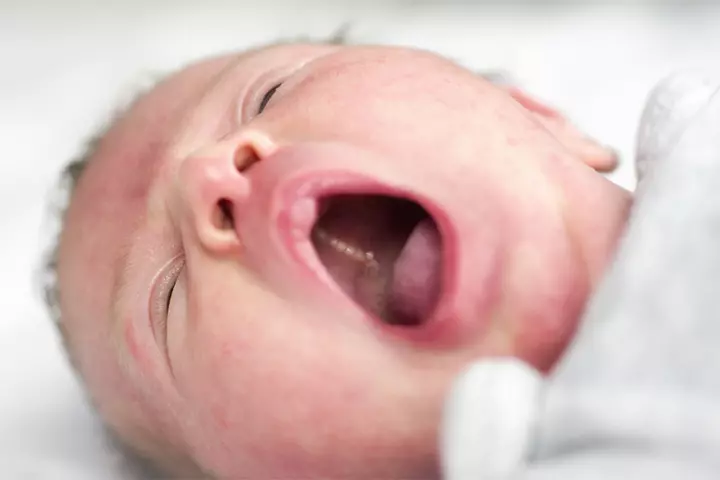
Epstein pearls appear as whitish-yellow bumps or nodules. A cyst can be one to three millimeters in size and is usually seen on the gums and roof of the oral cavity (1). You may notice a cluster of small round or oval bumps rather than a single bump in most cases.
They do not cause any specific symptoms, such as fever and swelling. Although Epstein pearl may resemble an emerging tooth, the cyst does not cause pain or other teething signs (4).
Discussing how she made an unusual discovery in her son’s mouth shortly after his birth, an avid blogger, Bridget, says, “The day little Jude was born, I noticed when he yawned little white balls or cysts on the roof of his mouth. A few days later, I was told that they could be a sign of thrush, a not-so-uncommon ailment in infants. Shortly after this, I began feeling a burning sensation in my breasts following breastfeeding, so I promptly began the treatment of thrush. So, after a few weeks of treating both Jude and me for thrush, I wondered if what I was seeing in his mouth was a sign of the ailment. Apparently, the little bumps are not a sign of thrush but are something called ‘Epstein pearls.’ Unlike thrush, these spots are simply tiny filled papules or cysts that are completely harmless and eventually go away on their own (i).”
Seek medical care if bumps do not disappear within a few weeks, bleed, or grow large in size. You may also consult a pediatrician if your infant shows signs of pain, such as refusing to feed or crying.
Are Epstein Pearls In Newborns Dangerous?
Epstein pearls are not dangerous or painful. They are benign and go away in one to two weeks (5). Cysts may often break due to friction from breastfeeding, feeding bottles, or pacifiers.
However, popping or squeezing these cysts may result in bacterial infections and increase the risk of complications, such as sepsisiA serious condition occurring as a result of an extreme reaction to an infection present in the body .
Usually, these are self-resolving cysts that go away without leaving any scars. It is rare to find Epstein pearls in babies older than three months. However, the cystic epithelium may remain in adult gingiva in some cases.
Contact your healthcare provider if you notice signs such as persistent or worsening discomfort for your baby, visible swelling or redness around the gums, or signs of infection like fever or unusual fussiness. If your baby experiences difficulty feeding or any other signs that suggest discomfort in the mouth, it’s best to seek guidance from a pediatrician to ensure proper care and rule out other underlying conditions.
Kara Lynn, a mother of a baby boy, shares about her baby’s two-month doctor’s appointment. She stated some physical characteristics her baby’s doctor told her, “He weighs 13 lbs 15 oz and is 24 1/4 inches long. He’s in the 90th percentile in weight and height! I can’t remember when they are supposed to double their birth weight, but I’m sure it’s not 2 months! It won’t be long before he’s 14 lbs 8 oz. The doctor said the thing on his lower gums is not a tooth, but an Epstein Pearl. He also has them on the roof of his mouth. They are harmless and apparently pretty common (ii).”
Diagnosis Of Epstein Pearls In Babies
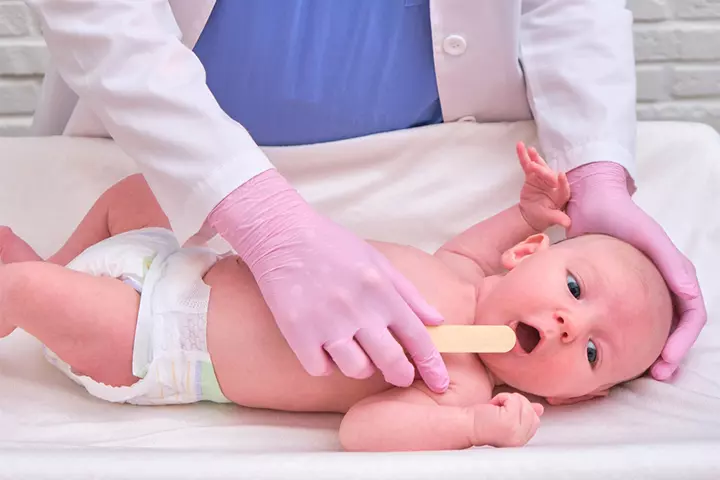
A pediatrician can diagnose Epstein’s pearls during an oral physical examination. Laboratory examinations and imaging tests are usually not required.
An expert’s evaluation can help rule out conditions that could mimic Epstein pearls, such as oral thrushiA fungal infection of the oral cavity that causes painful lesions, leading to eating and swallowing difficulties in babies , miliaiSmall whitish bumps appearing on a baby’s face that are usually self-resolving , Bohn nodules (mucosal gland cysts), dental laminaiA layer of epithelial tissue of the developing tooth , and natal teeth (teeth of babies born with teeth) (2).
In particular, Bohn’s nodules and gingival cysts are often confused with Epstein’s pearls in newborns. This is because all three conditions share similar histology, clinical appearances, and their nature of evolution; however, all three conditions have different etiology (1):
- Epstein’s pearl develops when the skin cells get trapped during the palate development.
- Bohn nodules are believed to be developed from the remnants of salivary gland tissue.
- Gingival cysts develop from remnants of the dental lamina, which is a dental tissue.
Natal teeth may irritate the baby while nursing, and some infants may accidentally swallow a fallen natal tooth. Therefore, if you notice a cyst in a baby’s mouth, consult a pediatrician to rule out the possibility of other conditions, which may cause complications.
Treatment Of Epstein Pearls In Babies
Epstein pearls may not require specific treatment and usually disappear within one or two weeks after birth; however, in rare cases, they may even take up to three months to resolve (4). They may dissolve due to friction with the nipples while breastfeeding or drinking from a bottle (2).
What To Do If Your Baby Has Epstein Pearls?
If your baby has Epstein’s pearls, the use of pacifiers and chewing toys may help break the cysts and gradually dissolve the bump. However, it is not recommended to squeeze or pop the Epstein pearls using fingers or any other instrument (2).
You should also monitor these cysts in your baby. If you see that the bumps persist for babies older than three months, they are changing shape and size, or your baby seems to be in pain or discomfort, make sure to talk to your baby’s pediatrician.
Frequently Asked Questions
1. Are Epstein pearls contagious in newborns?
No, Epstein pearls are not contagious.
2. How can Epstein pearls be prevented in newborns?
There are no documented ways to prevent Epstein’s pearls in newborns.
3. Are Epstein pearls more common in male or female newborns?
A small study with 1000 babies reports Epstein pearls to be slightly more prevalent in males than females (7).
4. Are Epstein pearls hereditary?
The condition is not known to be hereditary.
Epstein pearls in newborn babies are quite common, and they eventually disappear with time. It is advised that you consult a skin specialist or a pediatrician if the symptoms of Epstein pearls do not reduce and instead show signs of bleeding or get bigger in size. It is important to ensure that the baby does not scratch or pop the cysts as it might increase the chances of infection. Although no specific treatment is required for the treatment of Epstein pearls, it is advised that you take proper care of your baby and support the use of pacifiers as they will help dissolve the pearls.
Infographic: Some More Facts About Epstein Pearls
Epstein pearls self-resolve and do not cause any complications for most babies. If your baby has Epstein pearls, refer to this infographic to know more about their appearance and risk factors.
Some thing wrong with infographic shortcode. please verify shortcode syntax
Illustration: Signs Of Epstein Pearls In Newborn Causes And Treatment

Image: Dall·E/MomJunction Design Team
Personal Experience: Source
MomJunction articles include first-hand experiences to provide you with better insights through real-life narratives. Here are the sources of personal accounts referenced in this article.
i. Epstein pearls.http://thecuriouscaseofmommyhood.blogspot.com/2011/04/epstein-pearls.html ii. Two month checkup;
https://haydengoodwin.wordpress.com/2007/10/03/two-month-checkup/
References
- Laura E. Diaz de Ortiz and Magda D. Mendez; Epstein Pearls; United States National Library of Medicine
https://www.ncbi.nlm.nih.gov/books/NBK493177/ - Epstein Pearls; Cleveland Clinic
https://my.clevelandclinic.org/health/diseases/epstein-pearls - Karimi M DMD; (2025); Epstein Pearls in Newborn; Interventions in Pediatric Dentistry Open Access Journal (IPDOAJ)
https://lupinepublishers.com/pediatric-dentistry-journal/pdf/IPDOAJ.MS.ID.000266.pdf - Epstein Pearls; MedlinePlus; United States National Library of Medicine
https://medlineplus.gov/ency/article/001603.htm - Epstein pearls; Icahn School of Medicine at Mount Sinai
https://www.mountsinai.org/health-library/diseases-conditions/epstein-pearls - Newborn Appearance; University of Rochester
https://www.urmc.rochester.edu/encyclopedia/content?ContentTypeID=90&ContentID=P02691 - Farhana Tahseen et al.; (2014); A Cross-Sectional Prospective Study of Cutaneous Lesions in Newborn; International Scholarly Research Notices
https://www.hindawi.com/journals/isrn/2014/360590/
Community Experiences
Join the conversation and become a part of our nurturing community! Share your stories, experiences, and insights to connect with fellow parents.
Read full bio of Dr. Anuradha Bansal
Read full bio of Dr Bisny T. Joseph
Read full bio of Rohit Garoo
Read full bio of Shinta Liz Sunny






